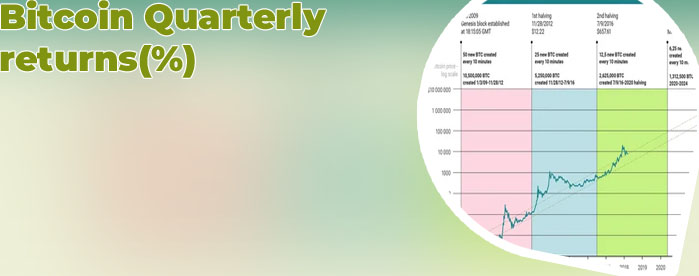
When it comes to navigating the ever-changing world of Bitcoin prices, it can be challenging to stay informed and make informed decisions. Luckily, there are numerous articles available that can help shed some light on the subject. Below is a list of 4 articles that provide valuable insights into the topic of "16 bitcoin price".
Understanding the Factors Influencing Bitcoin Price Fluctuations

Bitcoin price fluctuations are a complex phenomenon that is influenced by a myriad of factors. One key factor that plays a significant role in determining the price of Bitcoin is market demand. When there is a high demand for Bitcoin, the price tends to increase, while a decrease in demand can lead to a drop in price. Other factors that can impact the price of Bitcoin include regulatory developments, investor sentiment, macroeconomic trends, and technological advancements.
One practical use case of understanding the factors influencing Bitcoin price fluctuations is for traders and investors looking to profit from the volatility in the cryptocurrency market. By analyzing these factors and staying informed about market trends, traders can make more informed decisions about when to buy or sell Bitcoin. For example, if a trader anticipates a surge in demand for Bitcoin due to positive regulatory developments, they may decide to buy Bitcoin at a lower price and sell it at a higher price once demand increases. This strategy can result in a profitable outcome for the trader.
In conclusion, having a comprehensive understanding of the various factors that influence Bitcoin price fluctuations is essential for anyone looking to navigate the volatile cryptocurrency market successfully. By staying informed and analyzing market trends, traders and investors can make more strategic decisions that may lead to positive outcomes.
How to Predict Bitcoin Price Trends Using Technical Analysis
I recently had the opportunity to dive into the world of predicting Bitcoin price trends using technical analysis, and I must say, it was an eye-opening experience. The article I came across was incredibly insightful and provided me with a wealth of knowledge on how to analyze price charts and identify potential trends.
One of the key takeaways from the article was the importance of studying historical price data to identify patterns that could help predict future price movements. By looking at factors such as support and resistance levels, moving averages, and trading volume, it is possible to gain a better understanding of where the price of Bitcoin may be headed.
I was particularly impressed by the section on using various technical indicators, such as MACD and RSI, to help confirm potential trends and make more informed trading decisions. These tools can provide valuable insights into market sentiment and help traders anticipate future price movements.
Overall, the article shed light on the intricacies of technical analysis and how it can be used to predict Bitcoin price trends with more accuracy. For anyone looking to delve into the world of cryptocurrency trading, understanding these techniques is crucial for success in navigating the volatile market.
This article is important for individuals interested in gaining a deeper insight into the world of cryptocurrency trading and learning how to utilize technical analysis to predict price trends.
The Impact of Market Sentiment on Bitcoin Price Movements
The volatile nature of the cryptocurrency market is often influenced by market sentiment, which plays a crucial role in determining the price movements of assets such as Bitcoin. Market sentiment refers to the overall attitude of traders and investors towards a particular asset, reflecting their optimism or pessimism about its future performance. This sentiment can be influenced by a variety of factors, including economic news, regulatory developments, and even social media trends.
One of the key factors that can impact market sentiment is the involvement of influential figures such as Elon Musk, whose tweets have been known to cause significant fluctuations in the price of Bitcoin. In addition, events such as the recent crackdown on cryptocurrency mining in China have also played a role in shaping market sentiment and contributing to price volatility.
Moreover, market sentiment can also be influenced by global events such as economic crises or geopolitical tensions, which can lead to increased uncertainty and fear among investors. For example, the recent surge in Bitcoin prices following the outbreak of the COVID-19 pandemic highlighted the impact of market sentiment on the cryptocurrency market.
Overall, understanding the impact of market sentiment on Bitcoin price movements is essential for investors looking to navigate the volatile cryptocurrency market. By staying informed about key events, influential figures, and global trends, traders can make more informed decisions and mitigate the risks associated with market
Strategies for Trading Bitcoin at the k Price Point
As Bitcoin continues its upward trajectory, reaching the ,000 price point, traders are in search of effective strategies to capitalize on this bullish trend. One key strategy to consider is momentum trading, which involves taking advantage of the market's direction and volume to make profitable trades. With Bitcoin showing strong upward momentum, traders can look to buy into the asset with the expectation that its price will continue to rise.
Another strategy to consider is trend following, where traders analyze the historical price movements of Bitcoin to identify potential entry and exit points. By following the trend, traders can ride the wave of momentum and maximize their profits. Additionally, using technical indicators such as moving averages and Fibonacci retracement levels can help traders identify key support and resistance levels to make informed trading decisions.
Risk management is also crucial when trading Bitcoin at the k price point. Traders should set stop-loss orders to limit potential losses and ensure they do not overextend themselves in the market. By using proper risk management techniques, traders can protect their capital and continue trading with confidence.
In conclusion, with Bitcoin trading at the ,000 price point, traders can utilize momentum trading, trend following, and risk management strategies to make informed trading decisions and maximize their profits in the volatile cryptocurrency market.
